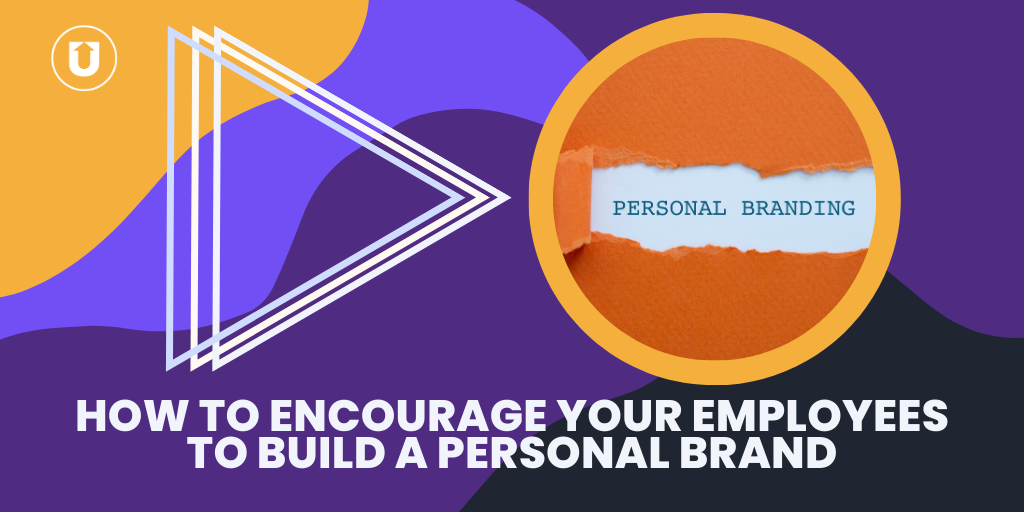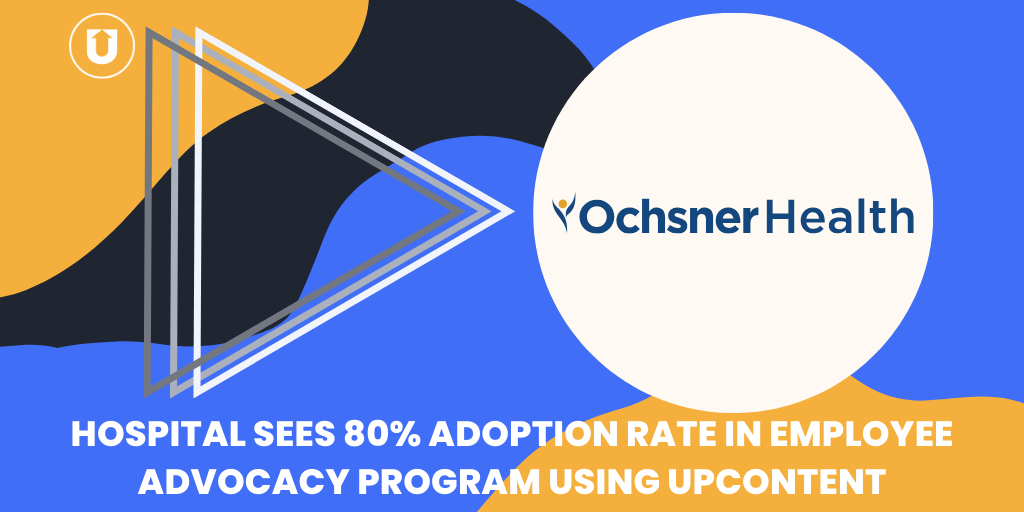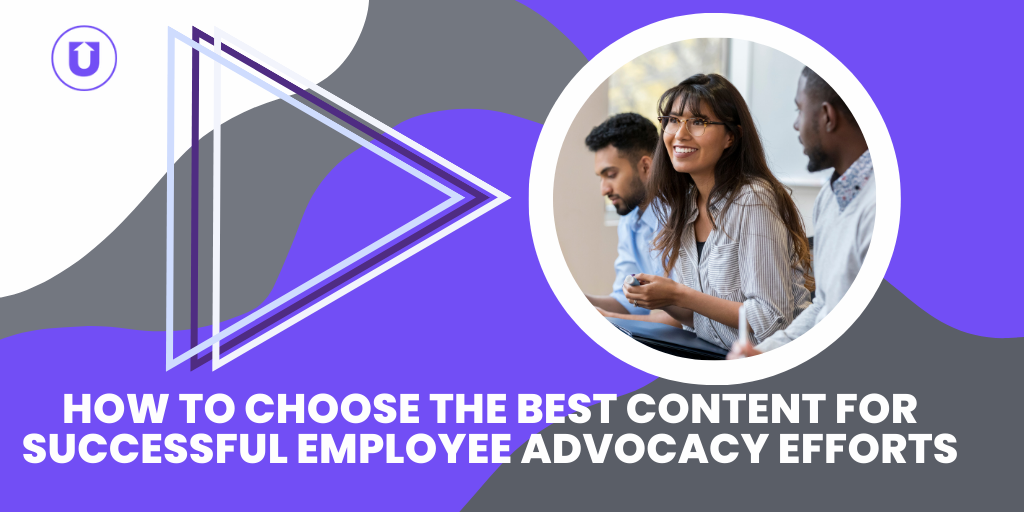Finding Success with Social Advocacy Programs
UpContent CEO Scott Rogerson was fortunate enough to be able to sit down with social media marketing leader, Hootsuite customer success manager Lexi Kuna and Gerry Avalos, the brand lead for leading commercial, rural and personal lines insurer, CGU for a webinar on employee advocacy programs.
Gerry was there to discuss how his company was able to utilize Hootsuite Amplify and UpContent to drive brand engagement with their newly created employee advocacy program.
Employee advocacy is one of the fastest-growing business trends precisely because of the type of impressive results that were discussed during the webinar.
In this post, we'll discuss some of the key takeaways from that meeting to help put you on track to creating your own advocacy program.
The benefits of a social advocacy program
Perhaps the first question to answer is why a company would want to invest in an employee advocacy program. What is it about social advocacy that has so many businesses following the trend?
During the webinar, Gerry gave us a great rundown of the benefits that he saw for CGU, and the reasons his company wanted to test the waters of employee advocacy.
- Stay in the loop - Even the most engaged employees don't always stay up-to-date on the state of the industry. Some employees put in very little effort at all on that front. Part of creating a successful advocacy program is building a pool of content for your employees to draw from. A side effect of this is that any employee who chooses to participate in the program immediately becomes more informed about the latest developments at your company and news surrounding the industry as a whole.
- Authentic reach - There are several ways you can grow your audience. In addition to their employee advocacy program, CGU also utilizes promoted content from LinkedIn. Paid views may bring in viewers, but that traffic is less engaged than when visitors come from the existing, real-people networks of your employees. As we'll see later, this more authentic form of reach is a more effective way of growing an audience.
- Personal brand building - Several years ago, CGU had a social media policy that was the polar opposite of employee advocacy; employees were prohibited from talking about company business on social media. This limits the ability of those employees to build their own personal brands. An employee advocacy program, and all the tools it provides for employees, reversed that trend. Not only are employees now allowed to build their own brand, but as they do, it gets tied back to CGU.
- Brand consistency - One of the reasons companies like CGU were initially hesitant to allow employees to discuss the company on social media is the lack of brand control. Even after they lifted their policy, Gerry talked of times where they'd have to reign in some rogue employees who they didn't think were quite representing the brand well enough on social media. That problem went away with the adoption of the employee advocacy program. The content strategy and resources provide the company with tools to allow employees freedom while still having some measure of brand control.
- Culture building - Building a positive company culture is an important part of keeping everyone on the same page and having a business that operates as efficiently as possible. Employee advocacy programs help with this in two regards. First, by allowing employees to post about the company on their social media accounts, you're helping to foster a sense of pride in the company within them. Second, the community aspect of content pooling and program-related meetings helps to create a stronger feeling of community within the staff that's participating in the program.
- Result tracking - The Hootsuite Amplify platform provides a wide range of metrics that companies can track to measure their progress and see how the program is performing. Information about who is sharing, what they are sharing, and who the top sharers are serves as motivation for employees in the program. Additionally, information about which content is producing the most engagement helps drive future decisions about what type of content the company should focus on.
How Hootsuite Amplify helped CGU
CGU didn't jump right into its employee advocacy program. Instead, to test the waters, the company created a pilot program.
Alongside the posts made through Hootsuite Amplify by employees participating in the pilot program, the company purchased paid views on LinkedIn. Those paid posts became a yardstick by which the advocacy program could be judged.
The numbers were impressive, as the established audiences of CGU employees engaged with the content significantly better than LinkedIn customers who were exposed to it through the paid promotion.
The numbers below show just how much more successful the pilot program on Amplify was compared to the LinkedIn-owned page.
- 160% more shares
- 140% more likes
- 80% increase in potential reach
- 23% more clicks
Gerry credits the success of the program with the fact that they started with the pilot program.
More specifically, he feels as though the selective nature of participation in the pilot allowed the program as a whole to get off on the right foot and build the type of interest that allowed them to achieve a respectable 71% employee participation rate:
"One of the things that worked really well for us was making sure that the pilot group were people who were already in the social space and had the appetite to participate. And this kinda helped us build momentum so that other people wanted in." - Gerry Avalos, CGU Brand Lead.
The four pillars of a successful advocacy program
As one of Amplify's customer success managers, Lexi is uniquely positioned to discuss what does and doesn’t work when forming a new employee advocacy program. Early in the webinar, she broke down what Hootsuite sees as the four pillars of creating a successful program.
- Program ownership and executive buy-in - Running an advocacy program, especially in the early stages, requires significant time and effort. Companies that dedicate a person or team to the task have a much higher success rate than those that don't. Getting management on board as cheerleaders for the program also helps drive excitement among the staff.
- Employee participation - This one is rather obvious. You can't have employee advocacy without employees to advocate. The less obvious part is that getting that type of participation requires some work. Successful companies do a good job of explaining how the employees can benefit from such a program.
- A strong content pipeline - The optimum amount of content shared should be between 8-13 new pieces per week. This is a lot to keep up with but is one of the most important factors of a successful program. The content needs to be not only frequent but meaningful. Services like UpContent help immeasurably in meeting both of those goals without one suffering.
- Ongoing communication - Getting people on board initially may be a challenge, but isn't nearly as challenging as keeping them engaged on a regular basis. Making the program rewarding with regular communications through emails, meetings, webinars, videos, etc can help with that. During these communications, highlight wins of the program to keep people excited about participating. Gamification also helps to create friendly competition that keeps everyone engaged.
Finding the right mix of original vs curated content
We've seen how curated content can help meet the demanding posting schedule required of a successful advocacy program, but how do you find the right balance between curated and original content?
Scott chimed in during this part of the webinar to explain what UpContent has learned about using curated content in any form of content marketing strategy.
The key, he says, is thinking the two types of content in terms of assets and operating expenses:
"The original content is assets, things you are focusing a lot of time and energy and resources on. You want to get the most value from this as possible. The third-party content is more of that operating expense. It's a little bit more 'i can get it out there and test new things’." - Scott Rogerson, CEO of UpContent
Scott expanded further on how the breakdown usually works. Lifestyle content is content that isn't necessarily within the wheelhouse of your company.
Topics like 'Anxiety in the Workplace' or 'Returning to Work After the Pandemic' may be of interest to your audience, but don't really fit your brand - often making them poor candidates for original pieces.
Third-party content shines here. It allows you to share works by creators who have more authority in the area while still linking back to your brand and providing your team with a content mix that allows them to showcase what they care about beyond the specific company offerings.
Industry content can come in at around 50/50. Here, original pieces from your company help to establish you as a thought leader and get your own voice and message out there, while third-party content from industry sources helps to fill out the posting requirements and show your audience that you're keeping up with the industry as a whole.
Finally comes company-specific content. These are items that relate specifically to your company. It may seem as though 100% of this must be original work, but any earned media coverage can pad this category out as third-party content as well.
Launch your advocacy program with UpContent
Hootsuite Amplify and UpContent make a perfect pairing for creating a content pool that your employees can use in their advocacy efforts.
Together, they provide all the tools you need to benefit from your employee's existing networks and their desire to share information about their work while also keeping your own brand messaging on target.



